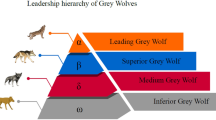Abstract
The accuracy of force measurement and prediction is of prime importance in the calibration of a force balance in aerodynamic models. Multi-point calibration has recently been introduced which has proven to be a more accurate prediction technique than the traditional single-point calibration technique. This paper describes the multi-point calibration of a double cone model using tri-axial and uniaxial accelerometers to obtain the maximum number of responses with accurate prediction using a minimum number of accelerometers. The multi-point calibration was performed by applying forces at nine locations on a double cone model considering two configurations. Firstly, accelerations were measured simultaneously using one tri-axial and two uniaxial accelerometers which were fixed at three locations of the model-balance assembly. Secondly, forces were measured from the responses obtained simultaneously using one uniaxial and one triaxial accelerometer fixed at two locations of the model-balance assembly. The prediction of the forces was performed using Adaptive Neuro Fuzzy Inference System (ANFIS). Genetic algorithm was used to obtain pure normal and pure axial forces from the components of applied forces at different calibration locations. The forces were predicted accurately from the responses measured using two accelerometers (one uniaxial and one triaxial accelerometer) as well as from the responses of three accelerometers (one tri-axial and two uniaxial accelerometers). Thus, tri-axial accelerometers can be used rather than using multiple numbers of uniaxial accelerometers. The use of tri-axial accelerometers leads to the ease of experimentation as mounting of multiple number of uniaxial accelerometers makes the calibration set-up complex and response measurement challenging. The attainment of responses in three directions at a single location is possible only using tri-axial accelerometer which helps in understanding the actual degrees of freedom experienced by the model. Thus, the use of tri-axial accelerometers for obtaining the responses in dynamic calibration is a better alternative than using uniaxial accelerometers.















Similar content being viewed by others
Data Availability
Raw data were generated at NIT Meghalaya and IIT Guwahati. Derived data supporting the findings of this study are available from the corresponding author on request.
Code Availability
Code was generated at IIT Guwahati and are available from the corresponding author on reasonable request.
References
Mee DJ (2003) Dynamic calibration of force balances for impulse hypersonic facilities. Shock Waves 12(6):443–455
Kulkarni V, Reddy KPJ (2010) Accelerometer-based force balance for high enthalpy facilities. J Aerospace Eng 23(4):276–280
Simmons JM, Sanderson SR (1991) Drag balance for hypervelocity impulse facilities. AIAA J 29(12):2185–2191
Mee DJ, Daniel WJ, Simmons JM (1996) Three-component force balance for flows of millisecond duration. AIAA J 34(3):590–595
Smith AL, Mee DJ, Daniel WJT, Shimoda T (2001) Design, modeling and analysis of a six component force balance for hypervelocity wind tunnel testing. Comput Struct 79(11):1077–1088
Tuttle S, Mee D, Simmons J (1995) Drag measurements at Mach 5 using a stress wave force balance. Exp Fluids 19(5):336–341
Robinson M, Schramm JM, Hannemann K (2007) An investigation into internal and external force balance configurations for short duration wind tunnels. In: New results in numerical and experimental fluid mechanics VI. Springer, Berlin, pp 129–136
Daniel WJT, Mee DJ (1995) Finite element modelling of a three-component force balance for hypersonic flows. Comput Struct 54(1):35–48
Robinson MJ, Mee DJ, Tsai CY, Bakos RJ (2004) Three-component force measurements on a large scramjet in a shock tunnel. J Spacecraft Rockets 41(3):416–425
Vidal RJ (1956) Model instrumentation techniques for heat transfer and force measurements in a hypersonic shock tunnel. Cornell Aeronautical Laboratory, Buffalo
Menezes V, Trivedi S, Kumar A (2011) An accelerometer balance for the measurement of roll, lift and drag on a lifting model in a shock tunnel. Meas Sci Technol 22(6):067003
Sahoo N, Mahapatra DR, Jagadeesh G, Gopalakrishnan S, Reddy KPJ (2003) An accelerometer balance system for measurement of aerodynamic force coefficients over blunt bodies in a hypersonic shock tunnel. Meas Sci Technol 14(3):260
Joarder R, Jagadeesh G (2003) A new free floating accelerometer balance system for force measurements in shock tunnels. Shock Waves 13(5):409–412
Raju C, Reddy NM (1990) Aerodynamic force measurements over missile configurations in IISc shock tunnel at M∞= 3.85 and 9.15. Exp Fluids 10(2–3):175–177
Park CY, Kim IG (2008) Prediction of impact forces on an aircraft composite wing. J Intell Mater Syst Struct 19(3):319–324
Thornhill RJ, Smith CC (1983) Impact force prediction using measured frequency response functions. J Dyn Syst Meas Control 105:227–231
Hideyuki T, Tomoyuki K, Kazuo S, Katsuhiro I (2005) Improvements of the accelerometer force measurement technique, In: ICIASF 2005 Record International Congress on Instrumentation in Aerospace Simulation Facilities, pp 110–118
Nanda SR, Kulkarni V, Sahoo N (2016) Design of artificial neuro-fuzzy based methodology for six component force balance. Procedia Eng 144:528–536
Pallekonda RB, Nanda SR, Dwivedy SK, Kulkarni V, Menezes V (2018) Soft computing based force recovery technique for hypersonic shock tunnel tests. Int J Struct Stab Dyn 18(05):1871004
Nanda SR, Kulkarni V, Sahoo N, Menezes V (2019) An innovative approach for prediction of aerodynamic coefficients in shock tunnel testing with soft computing techniques. Measurement 134:773–780
Nanda SR, Kulkarni V, Sahoo N, Menezes V (2019) A comparison of accelerometer and piezofilm-based force balances for hypersonic shock tunnels. P I Mech Eng G-J Aer 233(14):5310–5320
Author information
Authors and Affiliations
Corresponding author
Ethics declarations
Conflict of Interest
Ramesh Babu Pallekonda declares that he has no conflicts of interest. Sushmita Deka declares that she has no conflicts of interest, Abhishek Kamal declares that he has no conflicts of interest, Maneswar Rahang declares that he has no conflicts of interest and Vinayak Kulkarni declares that he has no conflicts of interest.
Ethical Approval
This article does not contain any studies with human participants performed by any of the authors.
Additional information
Publisher’s Note
Springer Nature remains neutral with regard to jurisdictional claims in published maps and institutional affiliations.
Rights and permissions
About this article
Cite this article
Deka, S., Kamal, A., Pallekonda, R.B. et al. Measurement Technique for Ideal Selection of Sensors and Accurate Force Recovery on Aerodynamic Models. Exp Tech 46, 213–224 (2022). https://doi.org/10.1007/s40799-021-00472-2
Received:
Accepted:
Published:
Issue Date:
DOI: https://doi.org/10.1007/s40799-021-00472-2




